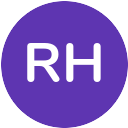A Comprehensive List of Similar Data Warehousing Tools
By Gregor K. published about 2022-12-19 17:52:23
Do you need some alternative websites for data warehousing? Look no further! Here is a comprehensive list of websites that offer similar services to data warehousing. From cloud-based data storage to data analysis, these sites have you covered. We’ll discuss the features and benefits of each website, so you can make an informed decision about which data warehousing alternative is best for you.
Data Warehousing
Data Warehousing is a comprehensive website dedicated to helping organizations store, manage, and analyze their data. The website features tutorials, case studies, and best practices for data warehousing, as well as a library of resources and tools to help you get the most out of your data.
Data Warehousing Alternatives
Kinetica
The Kinetica platform is a modern data warehousing solution that enables real-time analytics, machine learning, and data visualization on data of any size, structure, and velocity.
Kinetica is a cloud-native platform that leverages GPUs, in-memory processing and distributed computing to deliver fast performance for interactive analytics and machine learning.
Snowflake
Snowflake is a cloud-based data warehousing solution that enables users to store and analyze data from multiple sources.
Snowflake is a fully managed service that provides a secure and scalable platform for data warehousing and analytics.
Google BigQuery
BigQuery is a cloud-based data warehousing solution that enables users to store and analyze large volumes of data quickly and efficiently.
BigQuery is a serverless, pay-as-you-go service that makes it easy to manage and query data in the cloud.
Redshift
Amazon Redshift is a cloud-based data warehousing solution that enables users to store and analyze data from multiple sources.
Amazon Redshift is a fully managed service that provides a secure and scalable platform for data warehousing and analytics.
Teradata
Teradata is a cloud-based data warehousing solution that enables users to store and analyze large volumes of data quickly and efficiently.
Teradata is an enterprise-level solution that deploys on-premise and offers enhanced performance and scalability.
Vertica
Vertica is a cloud-based data warehousing solution that enables users to store and analyze large volumes of data quickly and efficiently.
Vertica is an enterprise-level solution that deploys on-premise and offers enhanced performance and scalability.
Exasol
Exasol is a cloud-based data warehousing solution that enables users to store and analyze data from multiple sources.
Exasol is an enterprise-level solution that deploys on-premise and offers enhanced performance and scalability.
Microsoft Excel
Both "Data Warehousing" and "Microsoft Excel" are tools used to store, manipulate, and analyze data.
"Data Warehousing" is a database system while "Microsoft Excel" is a spreadsheet program.
Blockchain
Both websites provide resources to help businesses understand how to use data technology.
Data Warehousing focuses on helping organizations accumulate, store and analyze large amounts of data while Blockchain focuses on providing a secure digital ledger technology for transaction processing.
Buy
Both websites provide a platform for customers to purchase products or services.
Data Warehousing is a website that provides technology solutions related to business intelligence and data management, while Buy is a website that allows customers to purchase physical products like electronics, books and apparel.
Cloud
Both websites provide information related to data management.
Data Warehousing provides information about structuring and organizing data, while Cloud focuses on storing and accessing data remotely.
Google Drive
Both websites provide a storage system for data.
Data Warehousing is meant specifically for the storage of larger amounts of structured data, while Google Drive is designed to store any type of file and document.
MDM
Both websites provide information and resources related to data management.
Data Warehousing focuses on storing, managing and analyzing large amounts of data, whereas MDM focuses on creating a single source of accurate data about customers or prospects.
Pull
Both websites provide information about data management and analytics.
Data Warehousing provides a comprehensive overview of data warehousing concepts, whereas Pull focuses on helping companies automate their data integration processes.
Data Warehousing Head-To-Head
Data warehousing is a powerful tool used to store and organize large amounts of data. It can be used to gather insights from data, reduce operational costs, and enable better decision-making. In this article, we will compare the features and benefits of data warehousing with other popular websites such as Amazon Web Services (AWS), Microsoft Azure, and Google Cloud Platform (GCP). We’ll look at how each platform handles data storage and manipulation, as well as their pricing models and user interface design. By the end of this article, you’ll have a clear understanding of which websites are best suited for your needs.
Data Warehousing and Microsoft Excel are both powerful data management tools that offer a variety of features for data analysis and manipulation. Data Warehousing is a centralized repository for storing, integrating, and managing large volumes of structured and unstructured data from various sources. It is designed to provide quick access to integrated business intelligence (BI) information. Microsoft Excel is a popular spreadsheet application used to store, organize, analyze, visualize, and calculate data. It offers features such as formulas, pivot tables, charts, sorting and filtering capabilities. Data Warehousing provides users with the ability to store large amounts of data in an organized manner that can be accessed quickly when needed. It allows users to define the relationships between different types of data so they can gain insights into their business operations. In addition, it provides users with tools to create reports and dashboards based on their collected data. Microsoft Excel allows users to input large amounts of data in an organized way and use various formulas to manipulate it for various purposes such as calculating sums or averages. It also provides users with interactive visualizations such as charts and graphs that can be used to better understand the trends or patterns in their datasets. Furthermore, it enables users to sort and filter their data for further analysis or insights.
Data Warehousing is a cloud-based data storage and analysis platform that allows users to store, manage, and analyze large volumes of data. Data Warehousing provides an intuitive user interface that makes it easy to access and manipulate data. It offers several features such as query optimization, distributed processing, security and governance, scalability, ETL support, and more. It also allows users to access the data from multiple sources including relational databases and flat files. Additionally, Data Warehousing offers integration with other applications such as Salesforce and SAP for a seamless user experience. Google BigQuery is a cloud-based data warehouse solution designed for fast queries over large datasets stored in Google Cloud Storage. Unlike traditional on-premise warehouses, Google BigQuery stores all of its data in the cloud, making it accessible everywhere without having to maintain hardware or software infrastructure. Google BigQuery also offers features such as automatic scaling and fault tolerance which allow it to quickly process petabyte-scale datasets with real-time performance. It supports both SQL and NoSQL queries as well as integration with popular BI tools like Tableau and Looker for visualizing the results. In addition to this, Google BigQuery also includes powerful machine learning capabilities that can be used for predictive analytics.
Data Warehousing and Blockchain are both database technologies that can help businesses manage large amounts of data. Data Warehousing is a more traditional database technology that stores and organizes data in a central repository, while Blockchain is a distributed ledger technology that replicates data across multiple nodes. Data Warehousing generally provides faster query processing times and allows for easy scalability, while Blockchain offers greater security due to its decentralized structure and immutability of transactions. Data Warehousing also supports relational databases using Structured Query Language (SQL), whereas Blockchain does not have an established query language yet. Both technologies offer various advantages for managing large datasets, but it will depend on the specific requirements of each organization which one is better suited for their needs.
Data Warehousing is a website that provides an extensive range of services related to data warehousing and data integration. Data Warehousing specializes in creating efficient and effective data warehouses for organizations so that they can store, manage, access, and analyze their data with ease. The services it provides include designing and building data warehouses, integrating existing databases into the warehouse, transferring data from other sources into the warehouse, and providing operational support. Data Warehousing also offers consulting services to help organizations plan and implement their data warehousing strategies. Buy is a website focused on helping customers purchase items they need without having to visit a physical store or shop online. Buy allows customers to purchase items directly from the website by entering their payment information. Customers can also access product reviews, compare prices between different sellers, read customer feedback about products, track orders, and even take advantage of special deals or discounts provided by vendors through Buy. Additionally, Buy helps customers save time by allowing them to add items to their cart quickly and making checkout fast and easy with its secure payment system.
. Data Warehousing and Cloud are both excellent choices for organizations looking to store data and access it quickly. Data Warehousing offers a range of features such as robust storage, scalability, data security, speedy analytics, and cost-efficiency. Meanwhile, Cloud provides resilient infrastructure, scalability and flexibility, data security and privacy, improved availability and reliability of services, easy integration with other cloud systems, and real-time access to data. Both solutions can be used to store large amounts of data in a secure environment - however they offer different strengths that should be taken into account when making the decision. Data warehousing provides a centralized system for storing data while cloud computing allows you to store it on remote servers or the internet. This can make cloud computing more accessible from multiple locations. Furthermore, cloud computing offers rapid scalability - meaning you can quickly add space if needed without having to deploy new hardware or software each time. On the other hand, traditional data warehousing often requires manual intervention when scaling up or down. Additionally, cloud computing allows for elasticity in pricing based on usage which may be attractive to those who need a solution that is flexible but not locked into long term costs. At the end of the day both solutions offer great benefits depending on individual needs - however careful consideration should be taken into account when selecting between them.
Data Warehousing and Google Drive are both data storage solutions that can help businesses manage their data. Data Warehousing is a database system for organizing and storing large amounts of data, while Google Drive provides cloud-based storage and collaboration tools. Compared to Google Drive, Data Warehousing is more comprehensive and powerful in terms of data analytics capabilities. It allows users to create tailored reports, access insights from historical data, and perform complex queries on large datasets. Additionally, Data Warehousing supports advanced security features like user authentication, encryption, and role-based access control. On the other hand, Google Drive offers simpler features such as file sharing, cloud storage synchronization across devices, document creation, and collaboration tools. It allows users to store files of up to 5 TB in size but lacks the data analytics abilities that make Data Warehousing so powerful.
Data Warehousing and MDM are both technologies used to manage large volumes of data efficiently. Data Warehousing is a form of database technology that stores data from multiple sources and organizes it into categories in order to facilitate analysis. It allows users to access, analyze, and report on data quickly. MDM, or Master Data Management, is a more complex technology than Data Warehousing. MDM is used for the governance, control, maintenance and distribution of software applications and resources across an organization. It helps organizations keep track of their most important data assets across multiple systems so they can be quickly and easily accessed when needed. Data Warehousing provides an efficient way to store data from multiple sources in one centralized location. It enables users to access and analyze data quickly with powerful query tools. MDM offers more than just storage capabilities â it helps organizations manage their software assets, improve operational efficiency, reduce costs, and increase customer satisfaction by ensuring consistent information across all applications. Furthermore, MDM can help ensure compliance with industry regulations like GDPR or HIPAA by providing centralized visibility into organizational data assets.
Data Warehousing and Pull are two websites that provide access to high-quality web data. Data Warehousing is an online platform that offers easy access to structured data from a variety of sources such as databases, websites, APIs and more. It allows users to aggregate, store, and query their data in one place. Pull is a cloud-based service that provides users with direct access to web APIs, eliminating the need for manual coding or scripting. It also features powerful automation tools to streamline repetitive tasks and speed up web data collection processes. Both websites offer support for multiple languages, advanced search capabilities, export options, and easy integrations with third-party software. However, Data Warehousing has additional features such as an intuitive interface for creating custom queries and scheduling automatic updates for regularly collected data sets.
Data Warehousing and Views are both online data visualization and analysis tools. Data Warehousing provides an interactive web-based dashboard that allows users to easily create custom visualizations, query data, and share insights with others. Views offers a variety of analytics tools including dashboards, reports, charts, and maps for exploring the data. Data Warehousing provides features such as the ability to connect to multiple databases, a drag & drop UI for creating new visualizations and queries, dynamic filters for drilling down into specific datasets, support for automatic data refreshes from connected sources, custom calculated fields using SQL or JavaScript functions, collaboration tools for sharing insights with others in real time. Views offers a wide range of features including: creating customizable dashboards with drag & drop widgets; defining metrics & indicators for tracking performance; creating reports tailored to specific audiences; connecting to multiple data sources including CSV files; building automated alerts based on user-defined criteria; and integrating with third party services such as Google Maps. Its mobile app also lets users access their dashboards on the go. Overall both Data Warehousing and Views provide powerful online visualization capabilities that can be tailored to meet the needs of any user.
History of Data Warehousing
Data Warehousing is a technology that has been around since the late 1980s, when the first data warehouse was created to store and analyze large amounts of data. Since then, the technology has evolved significantly, with the ability to store and process ever-larger volumes of data. Today, data warehousing is used to support a wide range of applications, from business intelligence to cloud computing.
Comments
-

-

-

-

-

-

-

Data Warehousing - because you can never have too much information overload!
2024-02-18 21:15:51 · -

Data Warehousing - for those who just can't let go of their data!
2024-03-25 22:08:38 ·
Further Links
Trending Sites
Top Sites in Data Analysis
Top Sites in Data Mining
Top Sites in Data Visualization
Data Warehousing
Data Warehousing is a comprehensive website dedicated to helping organizations store, manage, and analyze their data. The website features tutorials, case studies, and best practices for data warehousing, as well as a library of resources and tools to help you get the most out of your data.
